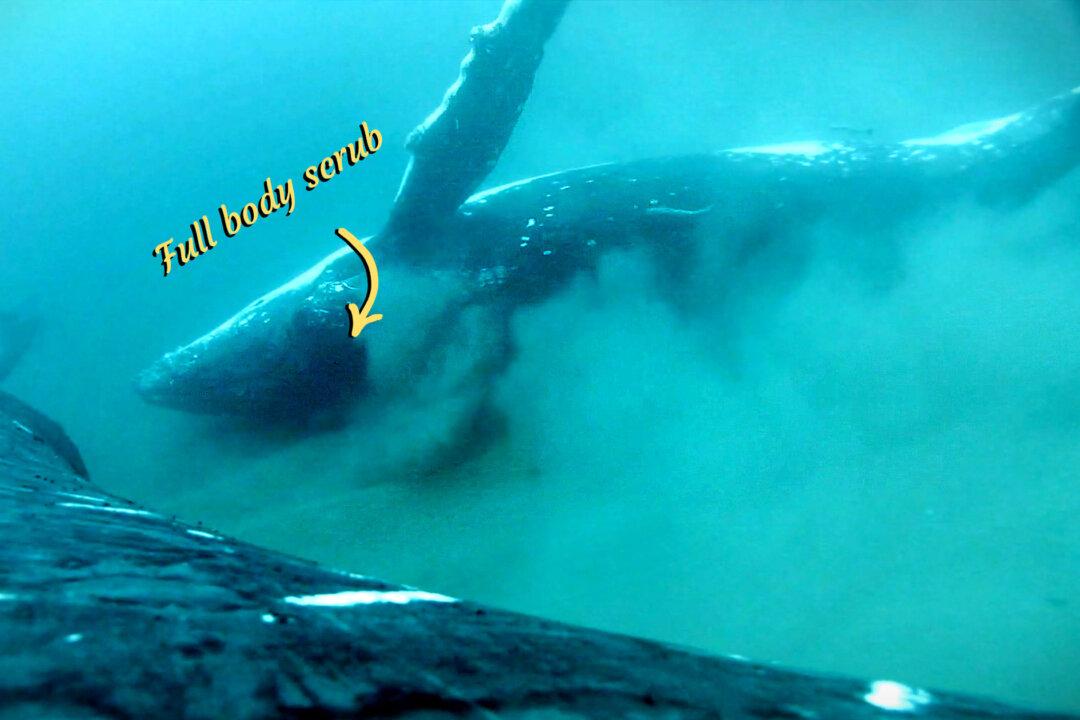It’s sort of like a day spa. But with more whales. And a whole lot more water.
Along Australia’s Gold Coast, for the first time ever, humpback whales have been video-recorded showing a behavior that is strangely satisfying to watch: it involves them exfoliating underwater by scrubbing their backs and sides clean on the sandy bottom of the bay.






